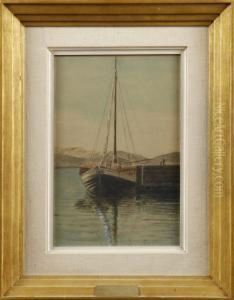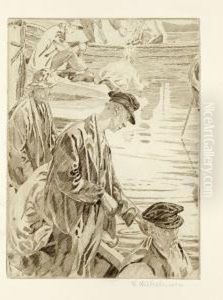Carl Wilhelmsson Paintings
Carl Wilhelmsson was a Swedish painter and graphic artist, born on June 6, 1866, in Fjälkestad, Sweden. He is often associated with the National Romantic style, which was prevalent in Scandinavia at the turn of the 20th century. Wilhelmsson showed an early talent for art and pursued his passion through education. He studied at the Royal Swedish Academy of Arts in Stockholm and later continued his education in Paris, which was the epicenter of the art world at the time.
During his time in Paris, Wilhelmsson was influenced by contemporary French art movements, especially Impressionism and Post-Impressionism. However, he did not fully adopt these styles, instead blending them with the traditional Swedish painting techniques he had learned. This led to a unique style that was both modern and distinctly Swedish, characterized by a warm palette, a focus on rural life, and the use of light and texture to convey mood and atmosphere.
Wilhelmsson's work often depicted the landscapes and people of his homeland, celebrating the beauty of the Swedish countryside and the traditional ways of life found there. His paintings are noted for their poetic and sometimes idealized representation of rural workers, fishermen, and farmers. He was also known for his portraits, which capture the character and essence of his subjects with sensitivity.
Throughout his career, Wilhelmsson was a respected figure in Swedish art. He served as a professor at the Royal Swedish Academy of Arts and influenced a generation of Swedish artists. In addition to his painting, he also worked with graphic art and illustrations, contributing to the visual culture of his time. Wilhelmsson's legacy is that of an artist who bridicated to his craft and deeply connected to the spirit of his nation.
Carl Wilhelmsson passed away on May 4, 1928, in Stockholm. His contributions to Swedish art were significant, and his work continues to be celebrated for its contribution to the National Romantic movement and its enduring portrayal of Sweden's natural beauty and cultural heritage.

